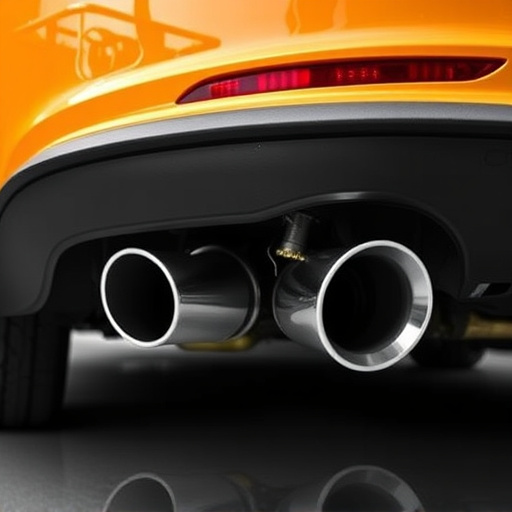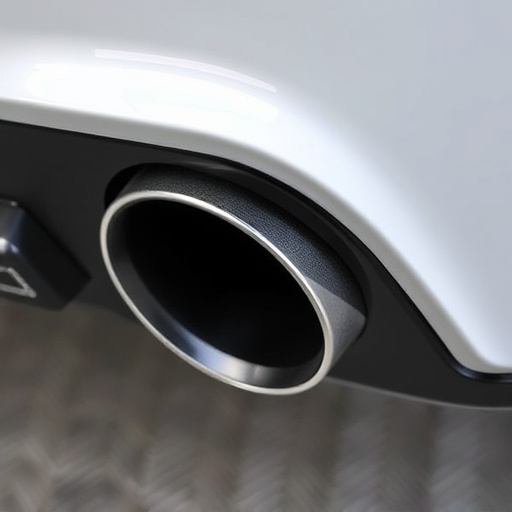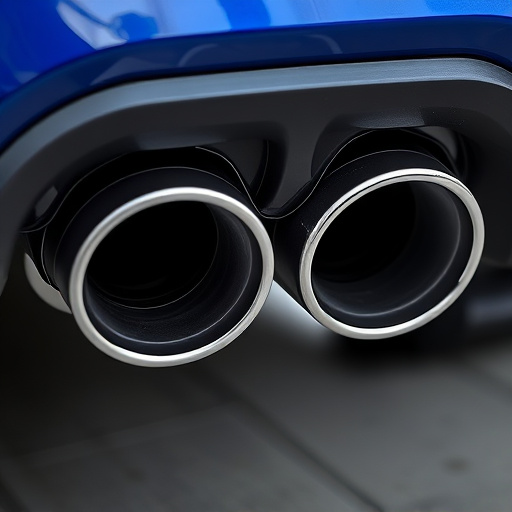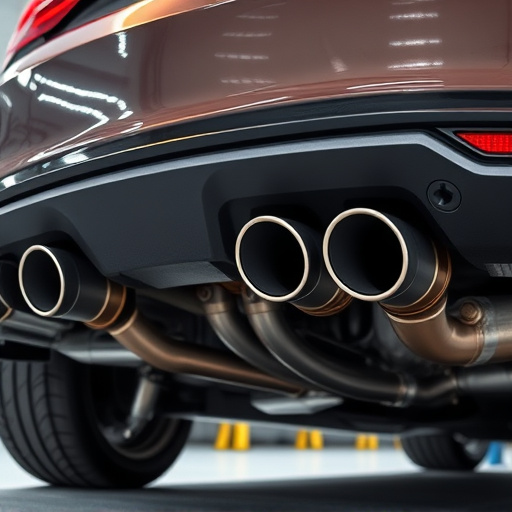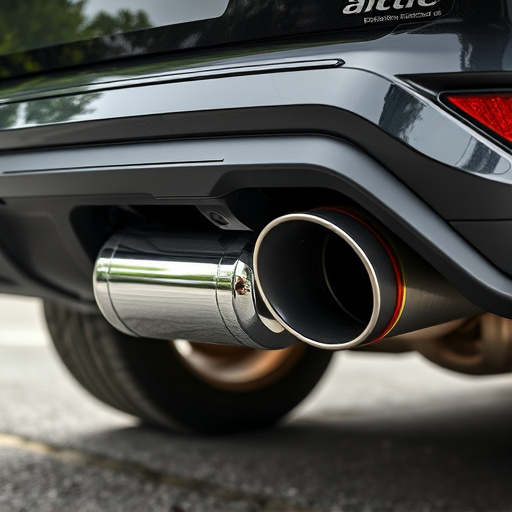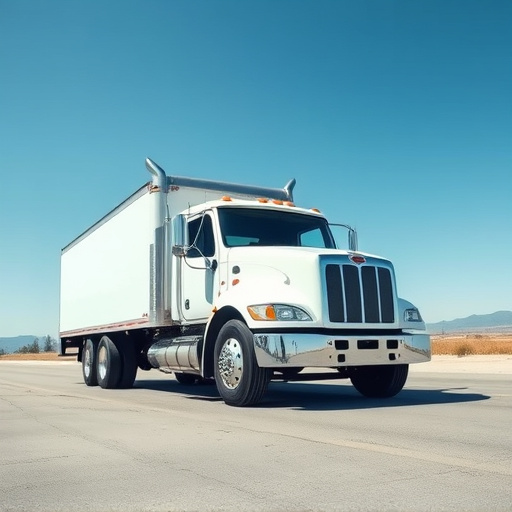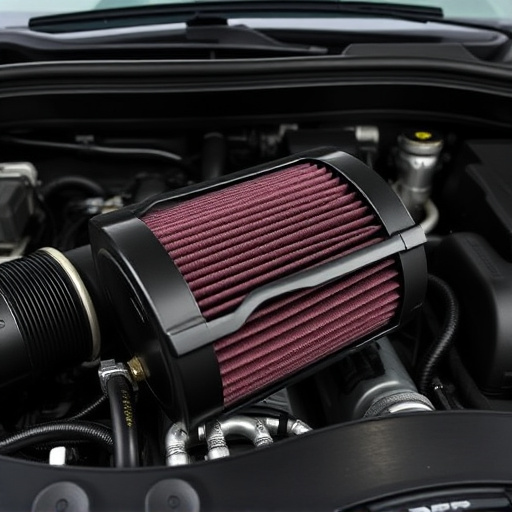Cat-back exhaust systems enhance vehicle performance and sound, focusing on rear sections from catalytic converter to tips. Key to effectiveness is pipe sizing: larger pipes boost efficiency and power via reduced backpressure, while smaller pipes create louder, more aggressive sounds. Balancing performance, noise, and legal limits ensures optimal exhaust gas velocity for efficient combustion. Selecting the right pipe size requires considering vehicle specifications, desired sound profile, compatibility with existing components, and airflow dynamics. Proper sizing unlocks full performance potential, improves fuel economy, and harmoniously integrates with other modifications like air filters and brake pads.
Choosing the right pipe size for a cat-back exhaust system is crucial for both performance and sound. Cat-back exhausts, comprising headers, mufflers, and tailpipes, enhance vehicle dynamics. This article guides you through understanding cat-back systems and their components, outlining key factors to consider when selecting pipe sizes. We’ll also share tips on ensuring optimal performance and efficiency with the perfect pipe choice for your ride.
- Understanding Cat-Back Exhaust Systems and Their Components
- Factors to Consider When Selecting Pipe Size
- How to Ensure Optimal Performance and Efficiency with the Right Pipe Choice
Understanding Cat-Back Exhaust Systems and Their Components
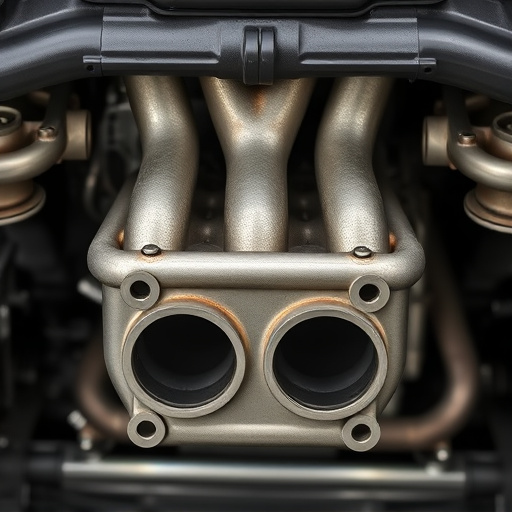
Cat-back exhaust systems are a popular modification for vehicle owners looking to enhance their car’s performance and sound. Unlike complete exhaust systems that replace every component, cat-back systems focus on the rear section of the exhaust, starting from the catalytic converter (or “cat”) and ending with the exhaust tips. These systems typically consist of pipes, headers, hangers, and sometimes, a high-flow catalyst or oxygen sensor. By redirecting and optimizing the flow of gases, cat-back exhausts can improve vehicle performance, especially when combined with other modifications like cold air intakes.
The right pipe size is crucial in a cat-back exhaust system as it directly impacts both sound and efficiency. Larger pipes allow for easier gas flow, reducing backpressure and potentially increasing horsepower. Smaller pipes can create a more aggressive sound but may restrict airflow. Choosing the appropriate pipe diameter involves balancing the desired vehicle performance, noise level, and legal considerations. Properly sized pipes ensure optimal exhaust gas velocity, promoting efficient combustion and maximizing the benefits of other modifications, thereby contributing to an enhanced overall driving experience.
Factors to Consider When Selecting Pipe Size
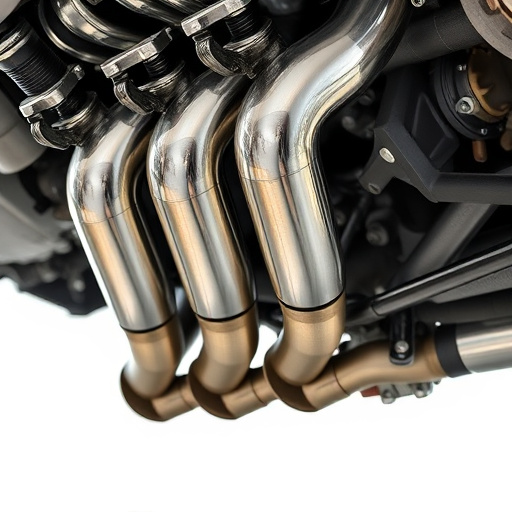
When selecting the right pipe size for a cat back exhaust system, several factors come into play to ensure optimal performance and efficiency. The primary consideration is the vehicle’s engine specifications and the desired sound profile. Different engines have varying power outputs and torque curves, which influence the choice of pipe diameter. For instance, high-performance engines may require larger pipes to handle increased exhaust gas flow without restriction, while more modest engines can function well with smaller pipes.
Additionally, the compatibility with existing components is crucial. This includes aligning with the vehicle’s brake rotors and pads, as well as ensuring smooth integration with intake components. The pipe size should complement the overall exhaust system design, balancing airflow dynamics against desired sound levels. As a result, considering both engine performance needs and aesthetic preferences, choosing the ideal pipe size for a cat back exhaust involves a careful balance of technical specifications and personal taste.
How to Ensure Optimal Performance and Efficiency with the Right Pipe Choice
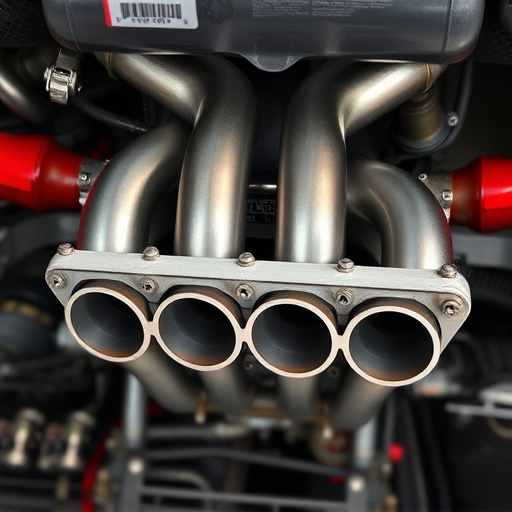
Choosing the right pipe size for a cat back exhaust is crucial to ensure optimal vehicle performance and efficiency. The pipes play a vital role in directing exhaust gases away from the engine, allowing for smoother combustion and improved engine power. When selecting pipe sizes, consider factors like the vehicle’s make and model, engine type, and desired level of performance. A larger pipe diameter can enhance airflow, resulting in increased horsepower and torque, particularly at higher RPMs. Conversely, smaller pipes may provide better flow characteristics during low-to-mid range RPMs, balancing power and fuel efficiency.
Additionally, integrating high-quality performance air filters and regularly maintaining brake pads can further contribute to overall vehicle performance. Proper pipe sizing ensures that exhaust gases are efficiently accelerated and expelled, reducing backpressure on the engine. This, in turn, enhances combustion efficiency, leading to better fuel economy and reduced emissions. Thus, for optimal cat back exhaust performance, it’s essential to match pipe sizes to your specific driving needs and vehicle configuration, while also considering complementary components like air filters and brake pads.
When selecting the ideal pipe size for a cat-back exhaust system, understanding both the system’s components and the vehicle’s performance needs is key. By considering factors like gas flow, noise levels, and desired power output, you can ensure optimal performance and efficiency. Remember, the right pipe size can truly revolutionize your vehicle’s exhaust note and overall driving experience.








